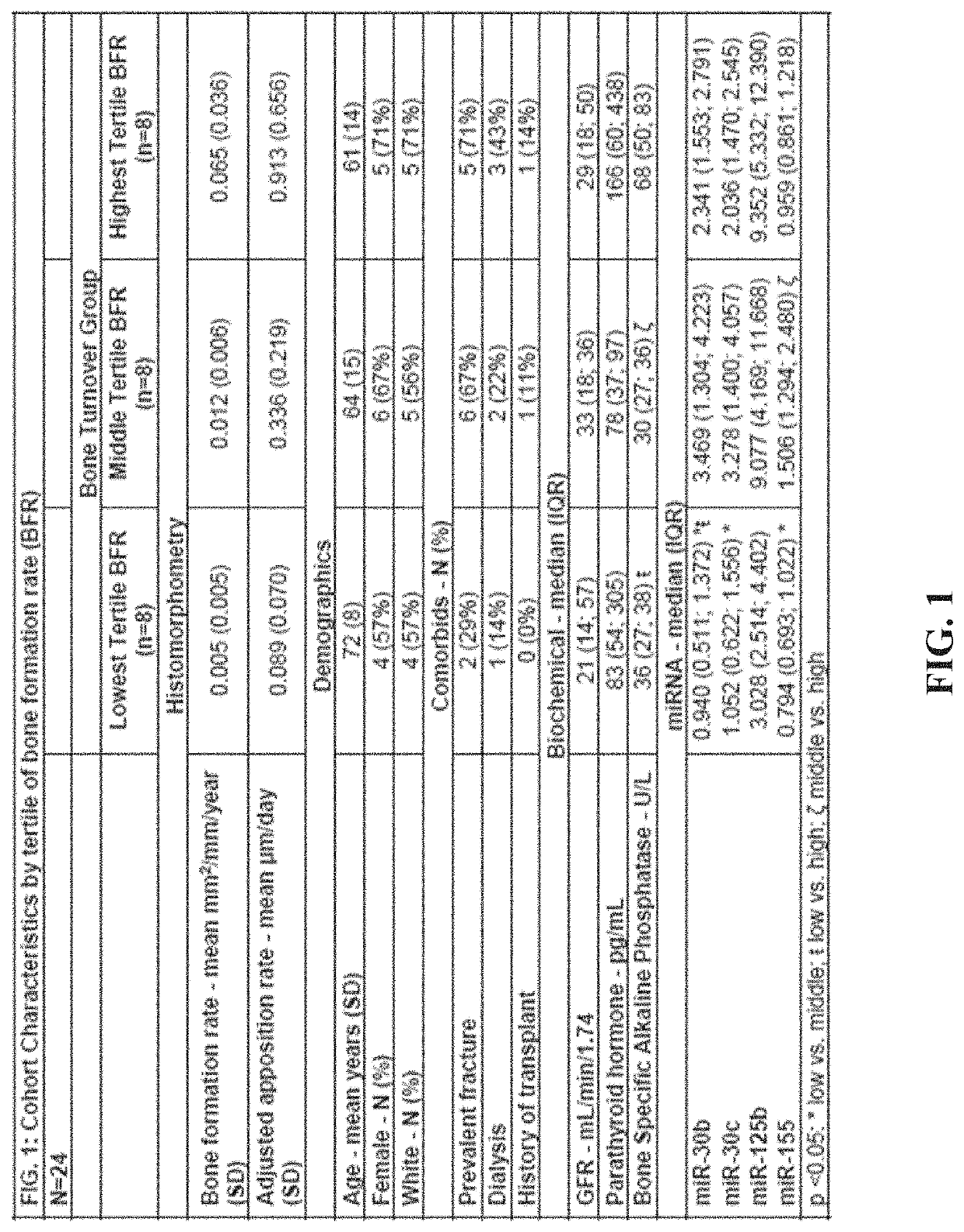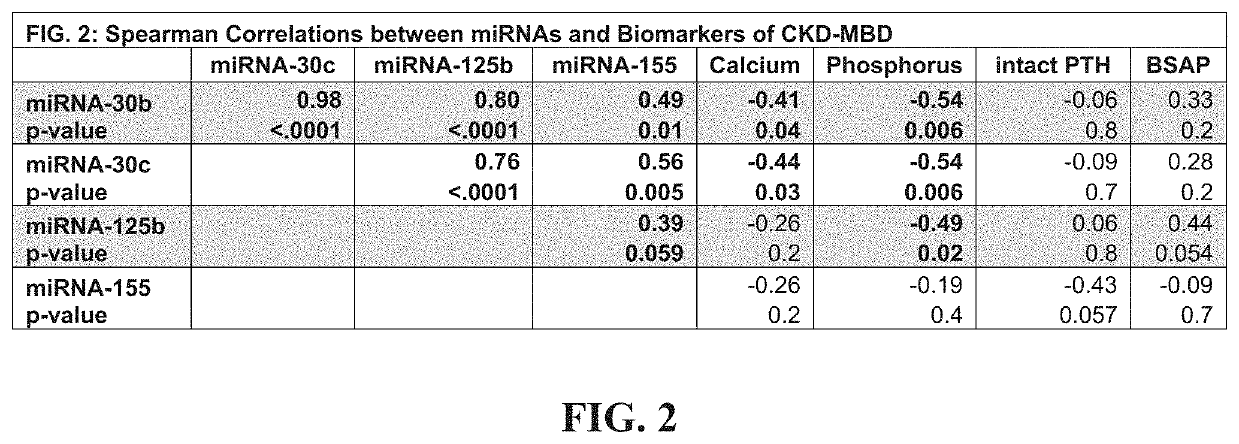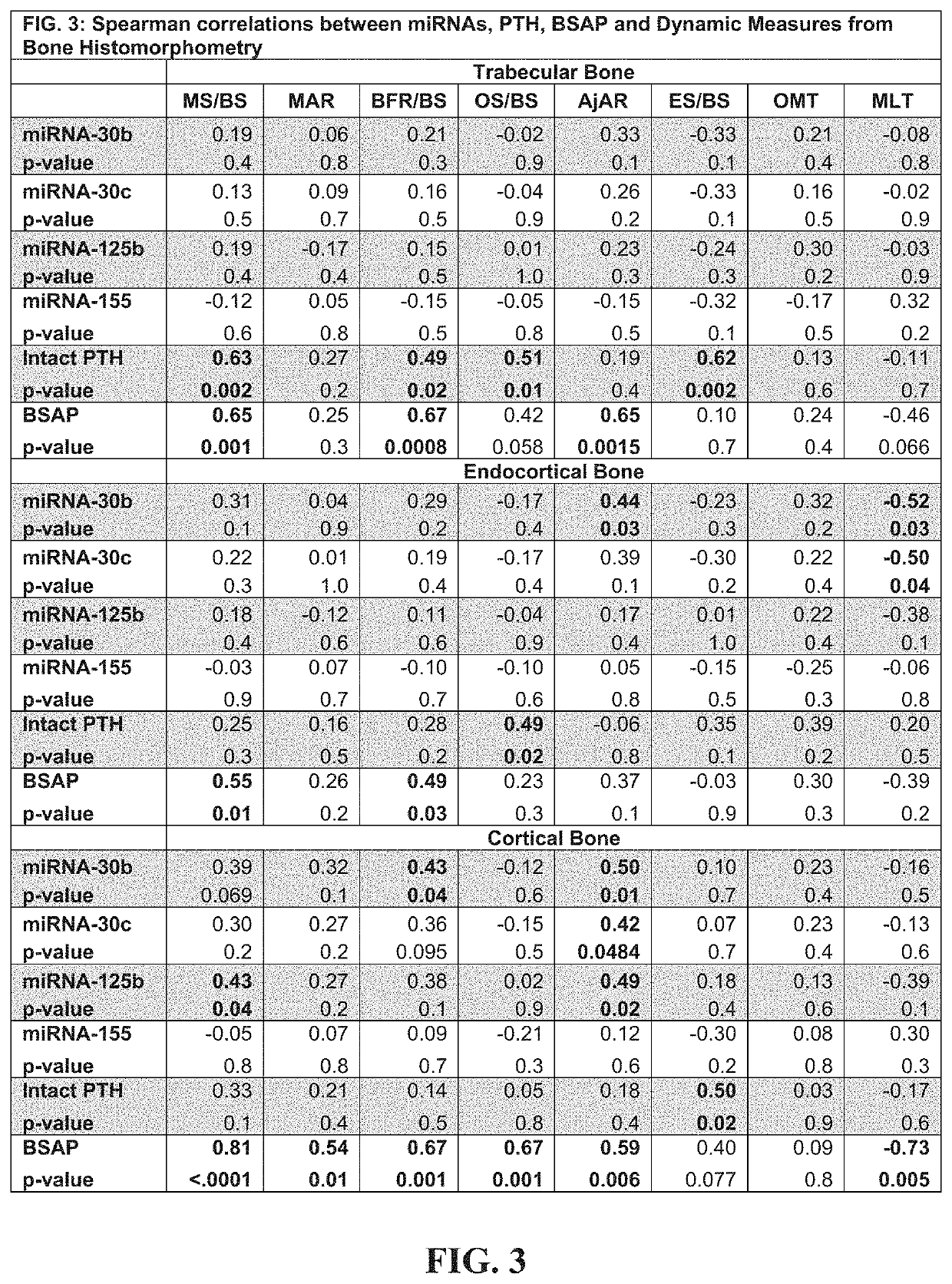Biomarkers of renal osteodystrophy type
a biomarker and renal osteodystrophy technology, applied in the field of biomarkers of renal osteodystrophy type, can solve the problems of insufficient adequacy of pth and bsap to discriminate between low and non-low, and the combination of pth and bsap did not improve the accuracy of identifying
- Summary
- Abstract
- Description
- Claims
- Application Information
AI Technical Summary
Benefits of technology
Problems solved by technology
Method used
Image
Examples
example 1
REFERENCES FOR EXAMPLE 1
[0249]1. Spasovski, G B, Bervoets, A R, Behets, G J, Ivanovski, N, Sikole, A, Dams, G, Couttenye, M M, De Broe, M E, D'Haese, P C: Spectrum of renal bone disease in end-stage renal failure patients not yet on dialysis. NephrolDialTransplant, 18: 1159-1166, 2003.[0250]2. Hamdy, N A, Kanis, J A, Beneton, M N, Brown, C B, Juttmann, J R, Jordans, J G, Josse, S, Meyrier, A, Lins, R L, Fairey, I T: Effect of alfacalcidol on natural course of renal bone disease in mild to moderate renal failure. BMJ, 310: 358-363, 1995.[0251]3. Coen, G, Mazzaferro, S, Bonucci, E, Taggi, F, Ballanti, P, Bianchi, A R, Donato, G, Massimetti, C, Smacchi, A, Cinotti, G A: Bone GLA protein in predialysis chronic renal failure. Effects of 1,25(OH)2D3 administration in a long-term follow-up. Kidney Int, 28: 783-790, 1985.[0252]4. Malluche, H H, Mawad, H W, Monier-Faugere, M C: Renal osteodystrophy in the first decade of the new millennium: analysis of 630 bone biopsies in black and white pa...
example 2
[0309]A main impediment to diagnosis and management of renal osteodystrophy (ROD) is the identification of underlying bone turnover-type (low, normal or high). Four microRNAs (miRNAs) that regulate osteoblast (miRNA-30b, 30c, 125b) and osteoclast development (miRNA-155) could provide superior discrimination of low turnover from normal or high turnover than biomarkers in clinical use. In twenty-four patients with chronic kidney disease (CKD) Stages 3-5D, double-labeled transiliac crest bone biopsy was obtained and levels of parathyroid hormone (PTH), bone specific alkaline phosphatase (BSAP) and circulating levels of miRNA-30b, 30c, 125b and 155 were measured. Spearman correlations assessed relationships between miRNAs and dynamic parameters of histomorphometry and PTH and BSAP. Diagnostic test characteristics for discriminating low or high turnover were determined by receiver operator curve analysis; areas under curve (AUC) were compared by χ2-test. miRNAs moderately correlated with...
example 3
REFERENCES FOR EXAMPLE 3
[0368]1. Coresh J, Selvin E, Stevens L A, Manzi J, Kusek J W, Eggers P, Van Lente F, Levey A S. Prevalence of chronic kidney disease in the United States. JAMA. 2007; 298(17):2038-47. doi: 10.1001 / jama.298.17.2038. PubMed PMID: 17986697.[0369]2. Spasovski G B, Bervoets A R, Behets G J, Ivanovski N, Sikole A, Dams G, Couttenye M M, De Broe M E, D'Haese P C. Spectrum of renal bone disease in end-stage renal failure patients not yet on dialysis. NephrolDialTransplant. 2003; 18(6):1159-66. PubMed PMID: 12748350.[0370]3. Hamdy N A, Kanis J A, Beneton M N, Brown C B, Juttmann J R, Jordans J G, Josse S, Meyrier A, Lins R L, Fairey I T. Effect of alfacalcidol on natural course of renal bone disease in mild to moderate renal failure. BMJ. 1995; 310(6976):358-63. PubMed PMID: 7677827; PMCID: PMC2548761.[0371]4. Coen G, Mazzaferro S, Bonucci E, Taggi F, Ballanti P, Bianchi A R, Donato G, Massimetti C, Smacchi A, Cinotti G A. Bone GLA protein in predialysis chronic renal...
PUM
| Property | Measurement | Unit |
|---|---|---|
| diameter | aaaaa | aaaaa |
| temperatures | aaaaa | aaaaa |
| temperatures | aaaaa | aaaaa |
Abstract
Description
Claims
Application Information
 Login to View More
Login to View More - R&D
- Intellectual Property
- Life Sciences
- Materials
- Tech Scout
- Unparalleled Data Quality
- Higher Quality Content
- 60% Fewer Hallucinations
Browse by: Latest US Patents, China's latest patents, Technical Efficacy Thesaurus, Application Domain, Technology Topic, Popular Technical Reports.
© 2025 PatSnap. All rights reserved.Legal|Privacy policy|Modern Slavery Act Transparency Statement|Sitemap|About US| Contact US: help@patsnap.com



